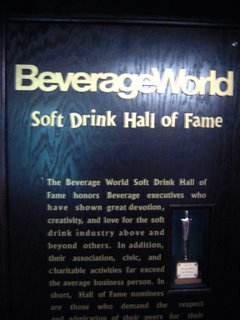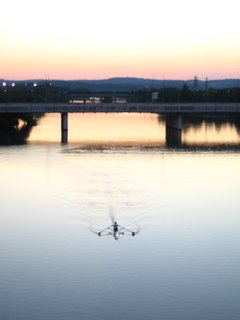You should plan to arrive at the Creation Evidence Museum on the hour, because that's when the tour begins. Actually, "tour" would be more accurate, since at the Creation Evidence Museum the word refers not to a physical journey that involves a series of stops and ends at the starting point, but an explanatory video in a single-room trailer home. The narrator of the video is Carl Baugh, founder of the CEM, doctorate in a field that varies from time to time, and tireless researcher of research that only he understands.
When you get to the museum, you will most likely have your choice of seats, as things haven't been too busy lately. The future looks bright, however, and the construction of the building next door should continue soon. This new building, the permanent home of the Creation Evidence Museum, will contain the world's largest hyperbaric biosphere, since everyone knows that the prediluvian world had an atmospheric pressure much greater than ours today, and that the crystalline matrix that separated the waters of the earth from the waters of heaven—as described in the Book of Genesis—filtered out all wavelengths of light except for magenta. It was this matrix that God punctured (here Baugh gestures with his finger, as if popping a bubble) to cause the world to flood, and bringing us to our modern day.
Baugh comes off like a slight creepy Mr. Wizard. He's avuncular and didactic, but from his tone of voice it is clear that you have to accept that he's right without question or investigation. He only appears at the museum in public on the first Saturday of every month, to give a lecture on recent developments in creation science and occasionally lecture on the Museum's work, such as sending missionaries to Papua New Guinea, where they observed pterodactyls.
But the museum has put out a good number of staff publications, available for purchase at the museum. These address questions such as "an DNA matching prove that man did or did not come from primates?" and "Why did God create spiders & vicious animals?" One such publication, authored by David V. Bassett, M.S., CEM Staff Writer, ends
I do not hear many calls coming from the people talking about global warming to bulldoze the rain forests. If they really believe in global warming, the rain forests, the rotting wood and the insects in those rain forests are the worst contributors.

If you read Baugh's dissertation—which is either about education and teaching creationism in schools, or about archeological evidence that dinosaurs and man were contemporaries—long enough, you'll come to a section entitled "Darwin's Phobias," in which Baugh psychoanalzes Charles Darwin. He concludes
It is, then, the conclusion of this author that Darwin experienced unithanatophobia (defined as: an obsession with universal death) and anisotrophobia (defined as: fear of designed structure in nature culminating in man).
I don't have a dictionary of psychology at hand, but it is worth noting that neither unithanatophobia or anisotrophobia are in the Merriam-Webster dictionary, and that Google, Yahoo, and MSN Search turn up exactly one usage: Baugh's dissertation.

It's fairly easy to discover that Baugh's credentials are questionable at best. He claims his (first, current) doctorate in education from the Pacific College of Graduate Studies, which does not have a website and is likely a diploma mill. He previously claimed a degree in anthropology from the College of Advanced Education in Irving, Texas, which does not exist. His most recent doctorate is from the Louisiana Baptist University (née Baptist Christian University), an unaccredited correspondence school in Shreveport.
But if you show up late on a sticky weekday afternoon, you don't know that. The room is air-conditioned and dark, and it contains unlabeled exhibits behind glass cases and Baugh's first hyperbaric chamber, magenta gels over its windows. On tape, Baugh is charismatic and seems to speak the language of science, countering counter-arguments, explaining the mural along one wall, inviting you to understand the truth about the world.
Ten minutes after the movie stops it begins again.


















